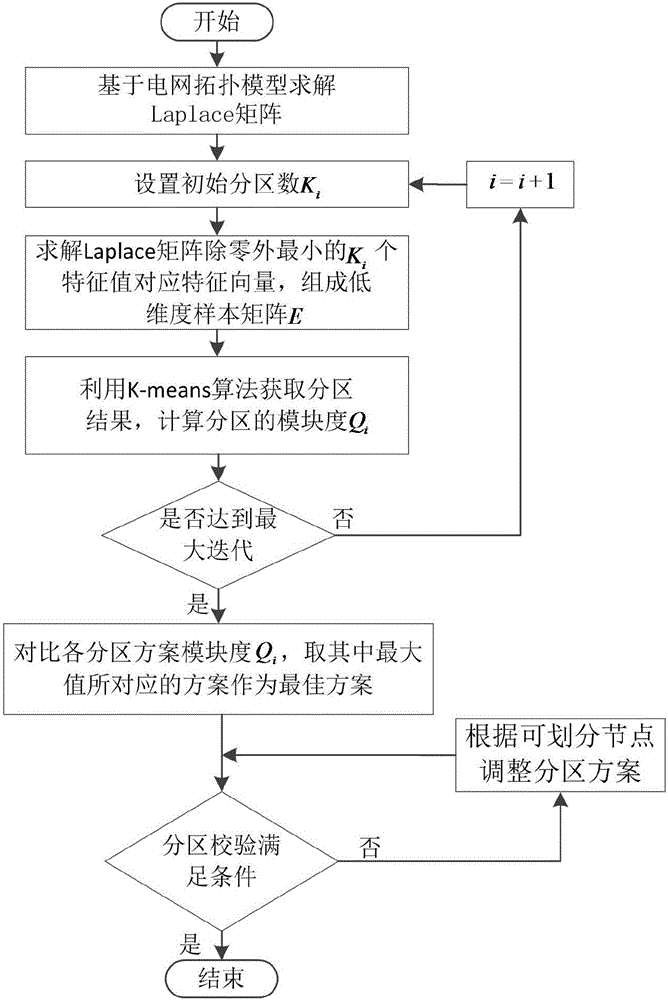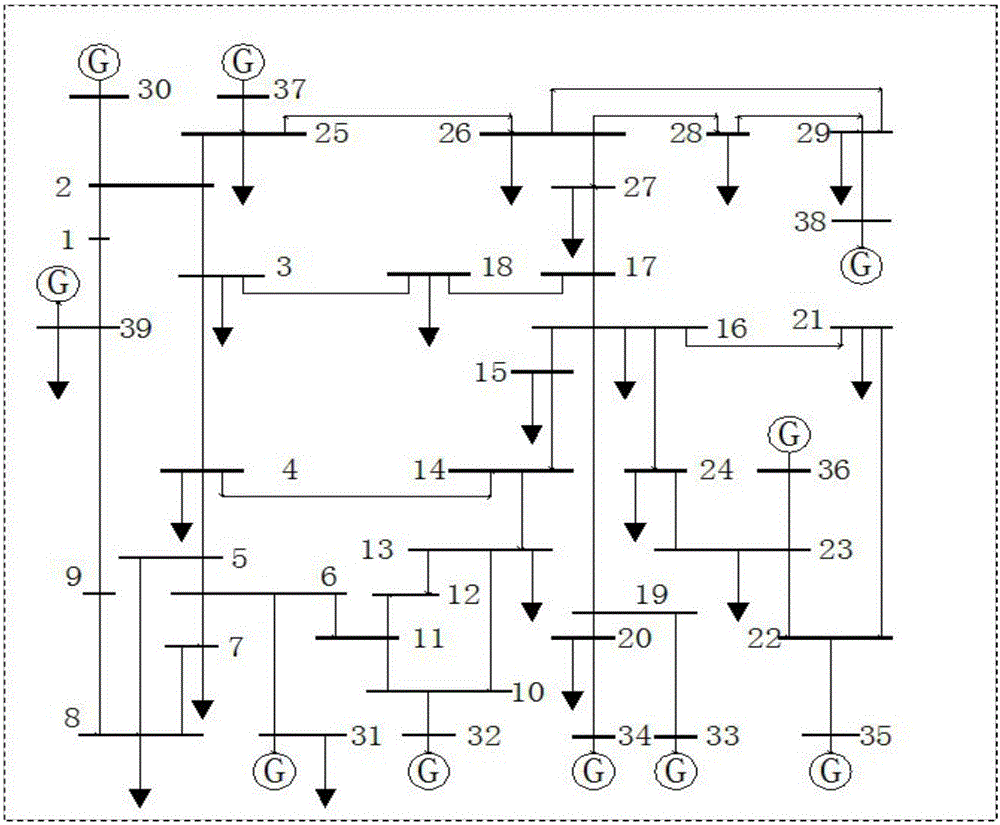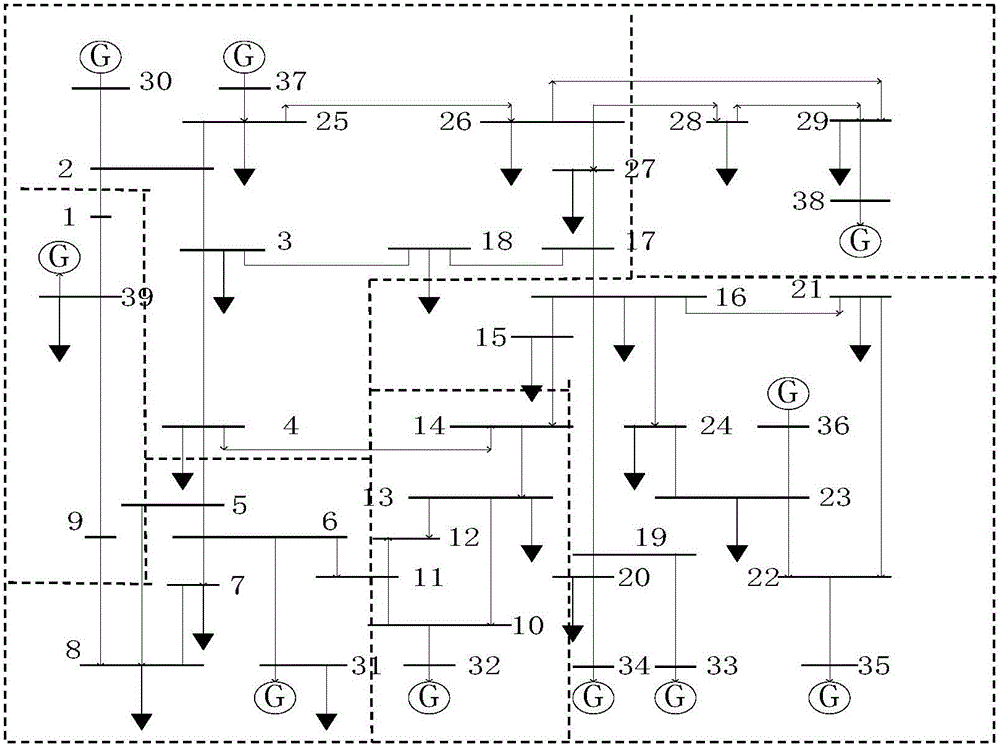Reactive voltage partitioning method based on spectral clustering
A technology of voltage partitioning and spectral clustering, applied in reactive power compensation, AC network voltage adjustment, circuit devices, etc., can solve problems such as complex calculations, increased calculations of clustering algorithms, and inability to ensure the feasibility of partitioning schemes, etc.
- Summary
- Abstract
- Description
- Claims
- Application Information
AI Technical Summary
Problems solved by technology
Method used
Image
Examples
Embodiment Construction
[0040] The specific embodiments of the present invention will be described with reference to the drawings.
[0041] This embodiment is described with an IEEE-39 node standard test system, which includes 10 reactive power supply nodes, 14 transformer nodes, and 34 lines. Use as figure 1 The method shown performs reactive voltage division.
[0042] This demonstration is only illustrative, and does not mean that the partitioning scheme of the present invention can only be used in the test system. On the basis of understanding and mastering the essence of the present invention, this solution is also applicable to other test systems, such as IEEE-118 node standard test system.
[0043] The node diagram of the IEEE-39 node standard test system adopted in this embodiment, such as figure 2 Shown.
[0044] i, j represent the node label, the value range is (1, 39);
[0045] k is the number of partitions, and Q is the degree of modularity. After analyzing the relationship between the degree of...
PUM
 Login to View More
Login to View More Abstract
Description
Claims
Application Information
 Login to View More
Login to View More - R&D
- Intellectual Property
- Life Sciences
- Materials
- Tech Scout
- Unparalleled Data Quality
- Higher Quality Content
- 60% Fewer Hallucinations
Browse by: Latest US Patents, China's latest patents, Technical Efficacy Thesaurus, Application Domain, Technology Topic, Popular Technical Reports.
© 2025 PatSnap. All rights reserved.Legal|Privacy policy|Modern Slavery Act Transparency Statement|Sitemap|About US| Contact US: help@patsnap.com



